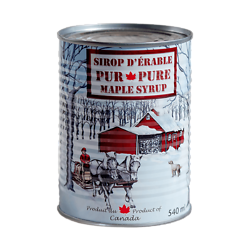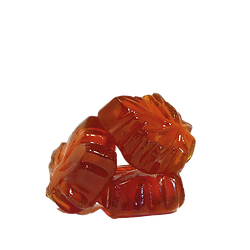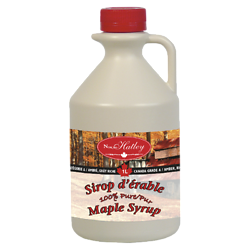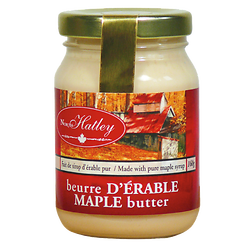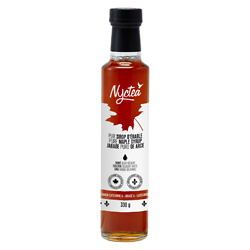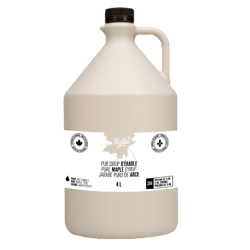recycled cardboards
Maple syrup manufacturing
Maple syrup production in the 19th century
At the time, to collect the sap of maple syrup, they used a torch for maple sap made of cedar wood. A tool called tar or gutter with a bevel cut shape and then it was inserted into a notch in the maple tree. An essential practice for making maple syrup. Although the use of the horse was more widespread than in previous centuries, the maple grower still had to put on his snowshoes to collect maple water in boilers. When we had enough, we went to the sugar shack where we boiled maple water. Maple syrup, reductant, taffy or maple sugar, which was colloquially known at the time, was made in this country.
Another local custom is the manufacture of sugar molds. True works of popular art including the Musée de la Civilization de Quebec has a superb collection of over 100 models. The sugar molds are handmade, a manufacturing method passed from generation to generation, they were carved from hard maple, cherry or walnut wood, often in one section or more rarely in several sections. They represented the familiar universe of farm families of that time and are a component of the historical heritage of Quebec.
Maple syrup from the 20th century to today
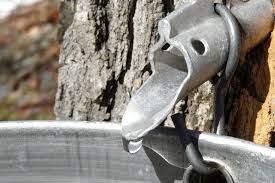 As the farms are larger and the harvesting techniques are refined, it is sometimes necessary to collect maple water two or three times a day. Some equipment is therefore modified to adapt it to the new requirements of this production method.
As the farms are larger and the harvesting techniques are refined, it is sometimes necessary to collect maple water two or three times a day. Some equipment is therefore modified to adapt it to the new requirements of this production method.
We replace the wooden bucket with an aluminum boiler. The sugar shack as we know it is also changing. From the heavy iron cauldron, we pass to the evaporator which incorporates thermometers, a float to control the level and entry of maple water, a hood to evacuate the steam.
In the mid-seventies, technology entered the maple sector with the development of tubing networks in Quebec maple trees. These blue plastic pipes replace buckets, barrels, horses and tractors. Thanks to a vacuum pump system, the maple water goes directly from the sugar maple to the storage tanks for maple syrup. Each torch is connected to this system and starting is automatic as soon as the temperature is high enough for a pour.
The appearance of the so-called reverse osmosis technique in the 1980s was another technological revolution. The use of a reverse osmosis membrane for the partial concentration of maple water respects the spirit and the letter of the regulation, because the technique used for maple products cannot be assimilated to refinement. This technology makes it possible to concentrate the elements soluble in maple water and it is considered a valid substitute for evaporation.
This technological innovation aims to lower production costs and decrease the working hours of the families of maple syrup producers, and it retains the intact taste and characteristics that make maple products, a particularly natural sugar that has been appreciated for hundreds of years.
From this ancestral production were born many derivative products for all tastes, both sweet and savory. For the greediest, you will find maple products, maple biscuit, spreads of Quebec and other maple products. To accompany your savory dishes, you can decorate them with maple sauces to give a sweet touch to your dishes. You can also taste teas, infusions and maple syrup as well as typical Quebec alcohols : whiskey liqueur, ice cider, as well as beers.
Maple syrup manufacturing process
The ideal conditions for a good harvest are a freezing period during the day and temperatures that drop below freezing overnight. The production of maple syrup comes in five stages :
Tapping
Maple syrup producers drill a hole 1 cm in diameter and 5 cm deep using a drill bit. It is possible to make more than a cut in a maple. However, it is not recommended to make several cuts in a maple whose trunk diameter is less than 25 cm. After drilling the hole, the grower inserts a blowtorch which allows the sap to flow into a boiler.
It is important to know that tapping does not affect the health of the tree. It is true that after the spring flows, a thin and long scar appears at the top and bottom of the notch. However, the wood is no longer active there. The tree therefore plugs the hole in two or three years. It isolates the injury and continues to grow, allowing it to live up to 200 years.
Sap collection
Traditionally, maple syrup producers hand-picked sap from metal boilers. Thereafter, they transported, the harvest using their sleigh pulled by a horse to the sugar shack.
Today, it is a system that elaborates pipes connected to the trees to each other and leads the sap directly to the sugar shack.
Partial concentration of sap by reverse osmosis
Many maple syrup producers have a reverse osmosis partial concentration device which allows them to increase the sugar level in the sap and thus reduce the boiling time
Evaporation of the sap
The sap is boiled in flat metal tanks, the evaporators, until the syrup is obtained. The sap must be boiled on the same day as it is picked. In addition, maple syrup producers must maintain a high, constant fire to obtain good maple syrup. An average of about 32 liters of maple sap is needed to make 1 liter of maple syrup.The sap is boiled to evaporate the water and concentrate the sugar it contains.
The boiling sap will undergo a complex sequence of chemical reactions which is responsible for developing the color and unique flavor of maple products.
The sap is transformed into syrup when it reaches a temperature of 104 C (219.2 F).
Syrup filtration
Before packing the syrup or transforming it into different products, it must be filtered in order to rid it of all impurities. There are two filtration methods, either gravity (bonnet) or pressure, using a filter press.
Source: Federation of Quebec Maple Syrup Producers,

